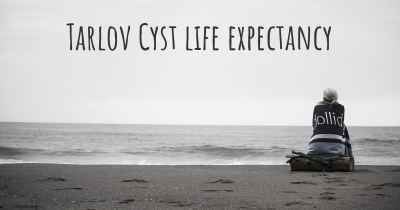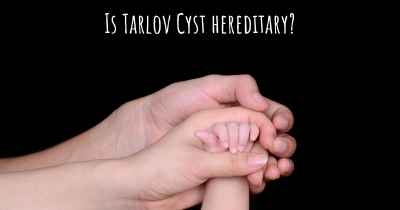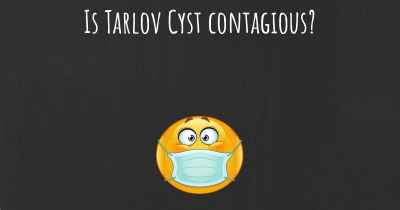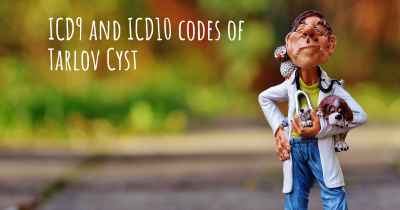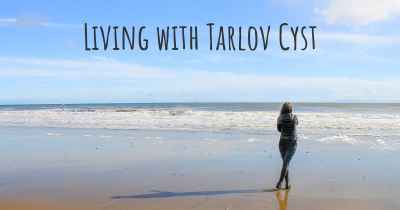How is Tarlov Cyst diagnosed?
See how Tarlov Cyst is diagnosed. Which specialists are essential to meet, what tests are needed and other useful information for the diagnosis of Tarlov Cyst
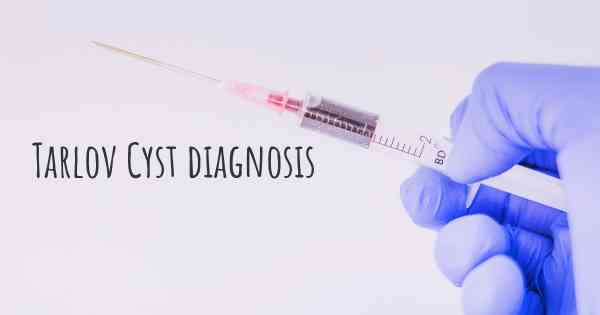
How is Tarlov Cyst diagnosed?
Tarlov cysts, also known as perineural cysts, are fluid-filled sacs that develop on the nerve roots at the base of the spine. These cysts are often asymptomatic and are discovered incidentally during imaging tests performed for other reasons. However, in some cases, Tarlov cysts can cause symptoms such as pain, numbness, and bladder or bowel dysfunction. If you are experiencing these symptoms or if a healthcare provider suspects the presence of Tarlov cysts, several diagnostic tests can be used to confirm the diagnosis.
1. Medical History and Physical Examination:
The first step in diagnosing Tarlov cysts involves a thorough medical history and physical examination. Your healthcare provider will ask about your symptoms, their duration, and any factors that worsen or alleviate them. They will also inquire about your medical history, including any previous spinal surgeries or injuries. During the physical examination, the healthcare provider will assess your neurological function, including reflexes, muscle strength, and sensation in the affected areas.
2. Imaging Tests:
Magnetic Resonance Imaging (MRI): The most common imaging test used to diagnose Tarlov cysts is an MRI scan. MRI uses powerful magnets and radio waves to create detailed images of the spine and surrounding structures. It can provide clear visualization of the cysts, their size, location, and any associated spinal abnormalities. MRI is a non-invasive and painless procedure that does not involve radiation exposure.
Computed Tomography (CT) Scan: In some cases, a CT scan may be performed to further evaluate the cysts. CT scans use X-rays and computer technology to create cross-sectional images of the body. This imaging technique can help identify any bony abnormalities or calcifications associated with the cysts.
3. Electromyography (EMG) and Nerve Conduction Studies (NCS):
If Tarlov cysts are causing symptoms such as muscle weakness or numbness, your healthcare provider may recommend electromyography (EMG) and nerve conduction studies (NCS). These tests evaluate the electrical activity of your muscles and nerves, respectively. EMG involves the insertion of small needles into the muscles to record their electrical activity, while NCS measures the speed and strength of electrical signals as they travel along the nerves. These tests can help determine if the cysts are affecting nerve function.
4. Myelography:
In some cases, a myelogram may be performed to provide additional information about the cysts. During a myelogram, a contrast dye is injected into the spinal canal, and X-rays or CT scans are taken to visualize the dye's flow. This test can help identify any spinal nerve root compression or other abnormalities that may be contributing to the symptoms.
5. Differential Diagnosis:
It is important to note that Tarlov cysts can mimic other conditions, such as herniated discs or other types of cysts. Therefore, your healthcare provider may consider a differential diagnosis to rule out other potential causes of your symptoms. This may involve additional tests or consultations with specialists, such as neurologists or spine surgeons.
Once the diagnosis of Tarlov cysts is confirmed, your healthcare provider will discuss the treatment options available to manage your symptoms and improve your quality of life. Treatment may include conservative measures such as pain management, physical therapy, or lifestyle modifications. In some cases, surgical intervention may be considered if the cysts are causing severe symptoms or neurological deficits.
Doctors who are well versed in this condition can diagnose if symptoms match the sites of the cysts. If there is doubt, the diagnosis could be made with a less invasive needle EMG/NCS examination. (see our protocol on our webpage) Many Tarlov cyst patients have a connective tissue disorder, which often causes Thin Fiber Neuropathy, the diagnosis can also be made with a biopsy on DVN. Fibromyalgia is often confused with symptomatic Tarlov cysts and is misdiagnosed.
Posted Jul 23, 2021 by Stichting Overdruksyndroom NL
Additional tests which help narrow down if the cyst is the cause or other pre-existing conditions is to have a nerve block done on the sacrum to see how symptoms improve. Finally, I had basic tests done on my SI joints, and leg nerves to make sure that symptoms were related to nerves and not joints. This is pretty standard for the process of eliminating other diseases first.
Posted Feb 26, 2017 by Amie 1250
Posted Apr 11, 2017 by Kelly 5450
Posted Apr 11, 2017 by Kate 720
Posted Aug 13, 2017 by James 950
Posted Oct 5, 2017 by Val0920 700
Posted Oct 29, 2017 by Karen 2500
MRI
Posted Jan 20, 2018 by dhedge42 2500
Posted Jun 18, 2018 by MissLeanneM 1700
Posted Jun 18, 2018 by Ze 2520
Posted Jun 19, 2018 by Debbie Dronfield 2500
Posted Jun 19, 2018 by Lynn 2500
Posted Jun 22, 2018 by Julie 1600
Posted Nov 30, 2018 by Connie 1740
Posted Jan 25, 2019 by Roy DeWyatt Smith 700
Posted Dec 9, 2019 by Ze 1500
Posted Dec 9, 2019 by Jess Carhart 2500
Full spine down to tailbone, coccyx.
Posted Dec 15, 2019 by Pam 1700
Posted Jul 22, 2021 by Michelle Tamplin 2500
Posted Jul 22, 2021 by [email protected] 700
Posted Jul 23, 2021 by Моника 800
How an MRI should be done: https://sosnl.nl/medici/diagnosestelling-eng
When doubtfull some may want to conduct a nerve block or a cortisone injection, but ......
Often a diagnostic nerve root block or a therapeutic blockade with corticosteroids is suggested to make the diagnosis, however there is a risk of puncturing the cyst because the nerve root is dilated, which can damage the nerve fibers in the cyst or cyst wall. infection, bleeding, or a dural leak.
It should be noted that the use of epidural steroids in radiculopathies and risk of rare side effects such as arachnoiditis, usually as a result of damage involving the introduction of foreign substances into the subarachnoid space. ESI (epidural steroid injection) is more used in sciatica when there is a substantial inflammatory component (especially if it is acute) but less useful when there is a predominantly compressive radiculopathy.
Consequences of Arachnoiditis is chronic, persistent pain that is mainly neurogenic (nerve generated) and thus difficult to treat. This pain is transmitted through the dorsal root ganglia in the spinal cord, resulting in damage to the autonomic and central nervous system, and can even cause changes in cerebrospinal fluid dynamics due to an uncommon complication of communicating hydrocephalus.
A number of epidural steroids contain excipients such as benzyl alcohol, a solvent for various compounds. In view of the weakness of the connective tissue of the nerve roots, one should therefore be careful with this. This is discussed in detail in “the arachnoiditis syndrome”, as well as research results on the usefulness of epidural injections.
As multiple Tarlov cysts – larger, smaller and valveless valve cysts – can often co-occur in the same patient and cause neurological symptoms, the minimally invasive procedure of NCS/EMG can thus replace the more invasive diagnostic block to avoid potential complications inherent in interventional procedures. However, once the diagnosis is made, treatment options are limited as there is no consensus on the choice of treatment.
An advantage of NCS/EMG, is that it is less invasive for the patient. But also know what you are measuring. Typically, a needle EMG is performed from myotomes L3 to S1 to determine the severity of radiculopathies. In case of symptomatic Tarlov (perineural) cysts, this is insufficient, the Tarlov cysts are most commonly found on nerve roots S2 to S4, so more extensive testing is necessary.
Se next links for protocol on needle EMG/NCS: https://sosnl.nl/medici/protocol-naald-emg
When patients are complaining about headaches, neckpain, blurry sight or loss of visual field, they should be examined for papilloedema and preferably also a pressure measurement.
Symptoms in Tarlov Cyst and Hypertension Syndrome patients may resemble Idiopathic Intracranial Hypertension. IIH, INPH (Idiopathic Normal Pressure Hydrocephalus) and symptomatic TCs are CSP dysregulation disorders. Several cases with an association between elevated intracranial pressure and Tarlov cysts have been described. IIH occurs mainly in young obese women and is associated with papilloedema and visual problems. Bortoluzzi et al. found that in these patients the nerve root sheaths in the spinal canal were clearly dilated. In addition, several other authors have reported radiculopathy in patients with IIH.
Tarlov cyst patients do not always have papilloedema, however papilloedema is no longer necessary to make the diagnosis. And the pressure is not always increased, with clear symptoms. There are no clear reference values for CSP (cerebro spinal pressure) and there are controversies about the OP cut-off value for the diagnosis of IIH (> 20 cm H2O in non-obese and 25 cm H2O in obese patients). It is well established that hydrostatically lowering pressure (HP) by external lumbar CSF drainage or the administration of acetazolamide can alleviate the symptoms of sacral Tarlov cysts. A normal IP is based on 5-15 CM H2O in adults, but most doctors still think you only can have symptoms when pressure is above 25 cm H2O.
Larger cysts can act as a buffer system for CSF pressure. Tarlov cysts are filling, expanding CSF containers that may initially act to prevent a further increase in pressure. In some cases, during the development of a Tarlov cyst, narrowing of the cyst neck may occur due to proliferation of spinal arachnoid granulations around the dorsal nerve roots. Such proliferation is in response to an increase in CSF pressure. A narrow neck creates a one-way valve system that allows CSF to enter the cyst, but the limit significantly limits outflow. Under these conditions, the pressure in the cyst rises to a level higher than the pressure in the spinal canal and axons are compressed even more than in communicating TCs.
https://www.researchgate.net/publication/333025384_Symptomatic_Tarlov_cysts_are_often_overlooked_ten_reasons_why-a_narrative_review
http://www.arachnoiditis.co.uk/index.php/information/medical-papers-2/124-the-arachnoiditis-syndrome-dr-sarah-smith
https://www.dovepress.com/the-link-between-idiopathic-intracranial-hypertension-fibromyalgia-and-peer-reviewed-fulltext-article-JPR
https://www.researchgate.net/publication/325874274_Spinal_Fluid_Evacuation_May_Provide_Temporary_Relief_for_Patients_with_Unexplained_Widespread_Pain_and_Fibromyalgia
“Idiopathic intracranial hypertension is not idiopathic: proposal for a new nomenclature and patient classification”
https://jnis.bmj.com/content/early/2019/12/01/neurintsurg-2019-015498.abstract
Posted Jul 25, 2021 by SOSNL 2500
De diagnose wordt gesteld met behulp van een MRI-scan van de onderkant van de wervelkolom. Hierop zijn de cysten zichtbaar maar blijven vaak onopgemerkt omdat artsen anno 2019 nog vaak onbekend zijn met deze aandoening.
Mensen met het overdruksyndroom of Tarlov-cysten lopen vaak al jaren rond met invaliderende klachten alvorens de diagnose gesteld wordt. Dit komt omdat veel van de symptomen ook voorkomen bij andere aandoeningen.
De diagnose wordt doorgaans gesteld op basis van:
De klachten van de patiënt, waarbij langdurig bestaande, onverklaarbare en moeilijk te behandelen pijnklachten centraal staan.
Een pinpriktest waarbij met een naald in de romp en ledematen geprikt wordt om gevoelsstoornissen vast te stellen.
Een MRI van de ruggengraat waarop Tarlov-cysten waargenomen kunnen worden.
Een elektromyografie (EMG) van de benen en het bekken waarop de elektrische activiteit van de spieren en zenuwen gemeten wordt.
Posted Jul 26, 2021 by Founder SOSNL 2500
Posted Jul 26, 2021 by KetoGma 2500
People with overpressure syndrome or Tarlov cysts often have disabling complaints for years before they are diagnosed. This is because many of the symptoms also occur in other conditions.
The diagnosis is usually made on the basis of:
The patient's complaints, in which long-standing, unexplained and difficult to treat pain complaints are central.
A pin prick test in which a needle is pricked into the trunk and limbs to determine sensory disturbances. An MRI of the spine showing Tarlov cysts.
An electromyography (EMG) of the legs and pelvis measuring the electrical activity of the muscles and nerves.
Posted Oct 27, 2021 by Reinette 400
Posted Oct 25, 2022 by Tania 2500
Posted Mar 24, 2017 by Simona 1060
Posted Jul 26, 2017 by Maria 1220
